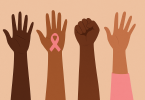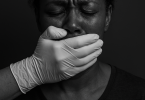When school lets out for the summer, teens enjoy a break from academics—but they’re also at greater risk of harm. While summer offers freedom and fun, it removes the structure, supervision, and services that typically help protect teens during the school year. For millions of young people, especially in our community, the summer months bring increased exposure to violence, substance use, mental health crises, and environmental dangers.
Teen safety during the summer isn’t just a family issue—it’s a public health priority, affecting our entire community. This summer we have a series of articles written exclusively about teen health and how we should prioritize it.
Summer: The Riskiest Time of Year
As the school year ends and summer break begins, many teens look forward to freedom, fun, and a break from structure. But behind the excitement lies a dangerous reality—summer is the most perilous season for youth. With fewer adult-supervised activities, lack of school-based support systems, our teens are at a greater risk of harm.
- Juvenile crime rises in summer. The U.S. Department of Justice reports that youth crimes such as assault and robbery peak in July and August
- Teen deaths from unintentional injuries spike. The CDC states that teens are more likely to die in car crashes, drownings, and gun incidents during the summer than any other time of year
- Substance use increases. According to the National Survey on Drug Use and Health (NSDUH), nearly one-third of first-time alcohol use among teens occurs during June and July
- Suicide rates climb. A JAMA Pediatrics study found that teen suicide attempts often increase during summer when access to mental health services through schools is reduced
With fewer protective factors in place, teens are often left to navigate these risks on their own.
What We Can Do: Solutions That Work
As Elevate Black Health emphasizes, structural racism, economic inequality, and gaps in access to care disproportionately affect Black teens. These disparities become more dangerous when school is out. We must ensure our teens are safe during the summer months when less supervision is available. This requires coordinated action from families, communities, and public health systems. Here are 5 effective strategies:
- Free or Low-Cost Summer Programs. When teens have access to organized activities—like sports, arts, job training, and academic enrichment—risk behaviors decrease. Programs like NYC’s Summer Youth Employment Program have shown a 10% reduction in arrests among participants.
- Expand Mental Health Access. Elevate Black Health calls for year-round, culturally responsive mental health care. Telehealth programs, mobile clinics, and peer-support groups can fill gaps when school-based services are unavailable.
- Community Violence Interruption. Programs like Cure Violence or Advance Peace hire former gang members and trained interventionists to mediate conflicts. Cities using these programs have reported reductions in shootings by up to 45%.
- Youth Employment. Teens with jobs are less likely to commit crimes, use drugs, or engage in risky behaviors. Paid internships and summer work programs teach responsibility, build confidence, and keep youth engaged.
- Parental Support and Education. Caregivers need tools to talk to their teens about safety, boundaries, peer pressure, and digital risks. Local nonprofits and public health departments can offer free workshops or downloadable tip sheets.
Summer should be a time of growth—not grief. Protecting teens during these months requires more than supervision; it demands investment, inclusion, and innovation. Black teens, in particular, face risks tied not to their choices, but to the systemic challenges they were born into. By recognizing these truths and acting accordingly, we can ensure that every young person has the safe, healthy summer they deserve.
For more reading
- Centers for Disease Control and Prevention. “Leading Causes of Death – Teenagers.”
https://www.cdc.gov/injury/wisqars - National Institute on Drug Abuse. “Summer Spike in Teen Substance Use.”
https://nida.nih.gov/news-events/news-releases - Gun Violence Archive. “Gun Violence Statistics – Summer 2023.”
https://www.gunviolencearchive.org - Elevate Black Health. “Supporting Black Teen Mental Health Year-Round.”
https://elevateblackhealth.com/supporting-black-teen-mental-health - Elevate Black Health. “Public Health Solutions for Safe Summers.”
https://elevateblackhealth.com/public-health-safe-summer - JAMA Pediatrics. “Trends in Adolescent Suicide Attempts.”
https://jamanetwork.com/journals/jamapediatrics - Guttmacher Institute. “Teen Pregnancy and STI Data.”
https://www.guttmacher.org - U.S. Department of Labor. “Youth Employment Programs.”
https://youth.gov/youth-topics/youth-employment - Elevate Black Health. “Representation in Healthcare: Why It Matters.”
https://elevateblackhealth.com/representation-matters-in-healthcare - Elevate Black Health. Teen Health Series. https://www.elevateblackhealth.com/category/teen-health/








